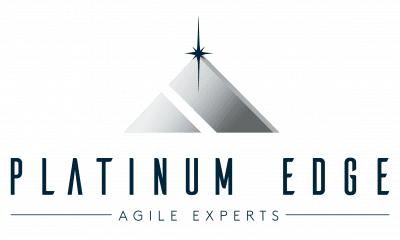Here is your guide for effective sprint planning.
Sprint planning describes when the scrum team establishes and commits to an immediate, customer-focused goal. They also identify product backlog items that support that goal and supporting tasks that satisfy the team’s definition of done
Sprint planning tips
Here are some tips that will help you use sprint planning to launch every sprint into success.
Topic 1 “The What”
Topic 1 of sprint planning focuses on “The What” – what can be done during the sprint. In other words, work as a team to set a sprint goal and select the prioritized subset of the product backlog needed to achieve it. A well-refined and appropriately-sized product backlog makes this easier. Remember:
- Incoroprate feedback from past sprint reviews nto the product backlog for consideration in the sprint.
- Ensure the scrum team works together to decompose larger product backlog items as a team before they’re considered for a sprint. This increases the team’s chances of being able to complete and demonstrate value each sprint.
- Use previous velocity trends as a guide for how much work to plan in a sprint.
- Be courageous in tackling unknowns and stretching as a team!
Be sure to define a sprint goal that aligns with your release goal and product vision. This means:
- Define your goal in a way that’s easy for the team to remember, is emotionally motivating, and connects the work of the sprint to your customer’s needs.
- Make the sprint goal very visible for everyone to see.
- And don’t forget the opportunities for improving your processes, tools, quality, communication, environment, etc that come out of your sprint retrospective. Commit as a scrum team to include one action item for continuous improvement every sprint. The action items from your sprint retrospectives need a path forward for implementation. The sprint backlog is that path.
Topic 2 “The How”
Topic 2 of sprint planning relates to “The How” – how we will accomplish the work. This is when the development team figures out how to achieve the sprint goal and develops the sprint backlog, which is the task list for accomplishing the sprint goal. Remember to:
- Break down your work into small tasks that can be accomplished in a day or less.
- Discuss how the entire scrum team will “swarm” on one user story at a time to keep work in progress low and flowing quickly to completion.
- Ensure your definition of Done and acceptance criteria will both be met through your work.
- Use the team’s available hours in the sprint as a guide for whether the number of task hours planned is appropriate.
Take the opportunity at the end of sprint planning to let each team member express their confidence in accomplishing the sprint goal using a Fist of Five vote. If everyone gives it a 3 or higher (5=I love it, 4=Sounds good, 3=I can support it, 2=I still have concerns, 1=no way), you have consensus. Otherwise, keep inspecting and adapting your sprint plan until everyone can support it. Set up your team task board. Then, once everyone has selected their first task to work on, it’s time to get to work!
How will we know we’re done with sprint planning?
You’ll know your planning is complete when you can accomplish this guidance from the Scrum Guide:
“By the end of the Sprint Planning, the Development Team should be able to explain to the Product Owner and Scrum Master how it intends to work as a self-organizing team to accomplish the Sprint Goal and create the anticipated Increment. -Scrum Guide 2017
Plan to spend up to two hours in planning for each week of your sprint (e.g. four hours for a two-week sprint). You can always spend less time in sprint planning, but keep it timeboxed and focused by not going longer than that.
Sprint planning guide
Our more detailed Sprint Planning Checklist should be your companion to ensure sprint planning is effective. The checklist is in PDF format so you can download it and use it on a regular basis.
Learn more about facilitating successful sprint planning sessions in our Certified ScrumMaster class.


